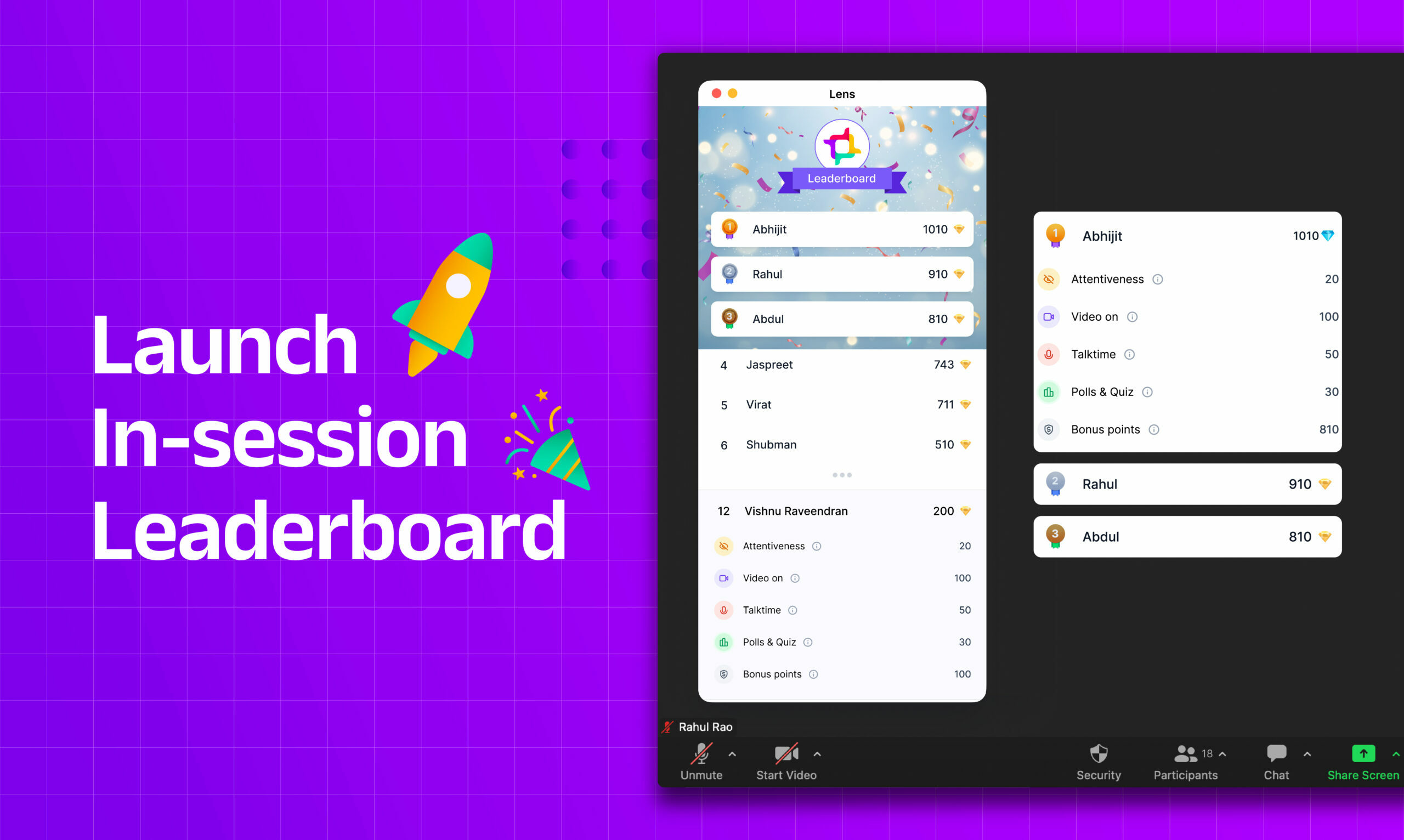Looking to boost your marketing strategy? Webinars are the way to go! Webinars that convert are an excellent way to showcase your brand, win over prospects, and get customers excited about your products or services. And the best part? Anyone with an internet connection can join in on the fun!
Webinars have been used across the board by software and data companies like AWS and Salesforce, consultancies like Deloitte and Bain, and EdTech companies like Scaler and LearnApp.
Webinars allow you to flex your knowledge and build trust with potential customers, all without having to leave your desk. So, what is the secret to creating webinars that actually convert? Keep reading and get ready to level up your online events game!
Pre-Webinar Preparation

A. Identify the target audience
To create webinars that convert, it’s crucial to know your audience. For a B2B company, understanding which department implements your products and who leads the departments (CEO, VPs or Managers) – will help you tailor content and ultimately lead to more sales conversions. Content should always be specific to your target market otherwise, they may not see value in attending or participating in future events/webinars like these again!
B. Decide on the format of the webinar
There are different webinar formats to choose from, including live or pre-recorded, single or multiple presenters, and interactive or passive.
- Live webinars offer real-time interaction between presenter and audience.
- Pre-recorded webinars are more flexible but lack interactivity.
- Single presenter webinars work well for specific topics, while multiple presenter webinars offer varied perspectives for broad topics.
Each of these formats has its own advantages and disadvantages, so it’s important to consider your goals and the needs of your audience when deciding which format to use.
C. Create a Compelling Webinar Offer
Create an irresistible offer for your webinar relevant to your target audience. It should pique their interest and encourage them to sign up for more information. AWS does this with free and hands-on webinars for stakeholders across domains.
The best way to do this is by creating something relevant for your target audience–something they actually want or need right now! You could be offering advice on how to start an online business from scratch; showing off some cool new tech gadget; sharing tips on how to save money at home; or even unveiling a new product line from one of your favorite brands like Apple or Samsung Electronics Co Ltd., depending upon who exactly makes up “your market.”
D. Develop a riveting title and description
Your webinar description is the next most important thing people will see when they search for your topic or event, so it’s important to make it compelling. A good webinar description should:
- Use a short and sweet headline to intrigue your audience.
- Include relevant keywords to attract people who are specifically searching for those topics. Experiment with different keyword combinations to find the most effective one
- Use a call-to-action (CTA) to encourage visitors to take the next step.
E. Choosing the right platform for hosting the webinar
To host a successful webinar, choosing a platform that is easy to use, works on multiple devices, and has a good reputation is important. Consider the features you require and the size of your audience when selecting a platform.
Using add-ons such as Lens for popular video conferencing platforms like Zoom can enhance participation and attentiveness during webinars. Lens provides valuable insights on engagement and attentiveness metrics and features like polls, quizzes, and gamification to create a more interactive and engaging experience for participants. With detailed data on engagement and attentiveness levels, hosts can create a more robust performance metric for online classes.
During the Webinar

A. Establish the agenda and structure
Establishing a clear and well-structured agenda is crucial for a successful webinar. The agenda should provide a clear overview of the topics that will be discussed, the order in which they will be presented, and the estimated duration of each topic.
Consider the needs and expectations of your audience and tailor the agenda to address them. Also, don’t forget to utilise visual aids such as slides, charts, and graphs to enhance the effectiveness of the agenda. Visual aids help to illustrate complex ideas and make the presentation more engaging, which leads us to our next point…
B. Utilise interactive elements
To increase engagement, interactive elements such as polls, quizzes, and Q&A sessions can be used during the webinar. Polls and quizzes can help to gauge the audience’s knowledge and opinions, create competition and excitement, and provide valuable feedback. Q&A sessions allow attendees to ask questions and receive answers in real-time, which can clarify any confusion or misunderstandings and address concerns or issues.
C. Build credibility with the audience
Building credibility with the audience is essential for establishing trust and increasing the likelihood of conversion. When presenting in a webinar, it’s essential to showcase expertise and provide valuable insights demonstrating knowledge and authority.
- Establish a personal connection with the audience by sharing relevant personal experiences or anecdotes.
- Be transparent and honest when presenting information to establish trust with the audience.
- Provide valuable insights and information relevant to the audience’s needs and interests and demonstrate knowledge and authority.
- Use credible sources when presenting information to ensure accuracy and trustworthiness.
D. Close with a call to action
Closing a webinar with a clear and direct call to action (CTA) effectively drives conversions. A well-crafted CTA encourages attendees to take the desired action, such as making a purchase or booking a consultation and provides a clear path forward for the audience.
- Understand the audience’s needs and motivations and make the CTA relevant to the webinar topic.
- The CTA should be clear and direct, with a straightforward message that is easy for the audience to understand.
- Place the CTA prominently at the end of the webinar so that attendees know the next steps they should take.
- Make the CTA easy to follow by providing clear instructions and minimizing any obstacles or barriers to taking action.
- Follow up with the audience after the webinar to reinforce the CTA and provide additional support.
Post-Webinar Follow Up

A. Utilise analytics to measure build a sales pipeline
Analytics can provide valuable insights into the success of the webinar. Metrics such as attendance rate, engagement, and conversion rate can help evaluate the webinar’s effectiveness and identify improvement areas.
Plus, real-time and post-facto analytics are a good measure of who was intrigued by the webinar. Creating a priority list by engaging with the data and reaching out to the most engaged consumers will help shorten sales cycles and increase conversions.
B. Collect feedback from attendees
Collecting feedback from attendees can help identify areas for improvement and provide insights into the needs and interests of the target audience.
C. Create a community for webinar attendees
Creating an online community for webinar attendees can help build relationships and engagement beyond the webinar. By providing a space where attendees can connect with each other and the presenter, it allows for continued conversation and deeper engagement with the topic. The community can also provide valuable feedback on the effectiveness of the webinar. This can help build relationships, foster engagement, and create a lasting impact beyond the webinar itself.
We hope you found these tips helpful and they help you to create webinars that convert. Remember, the key to success is having a plan in place before you start creating your webinar. You can’t just wing it! Keep attendees informed and use tools like Lens to boost participation and engagement. Remember, that all of these strategies work together as part of an overall strategy for building relationships with potential customers and establishing authority within your industry.




